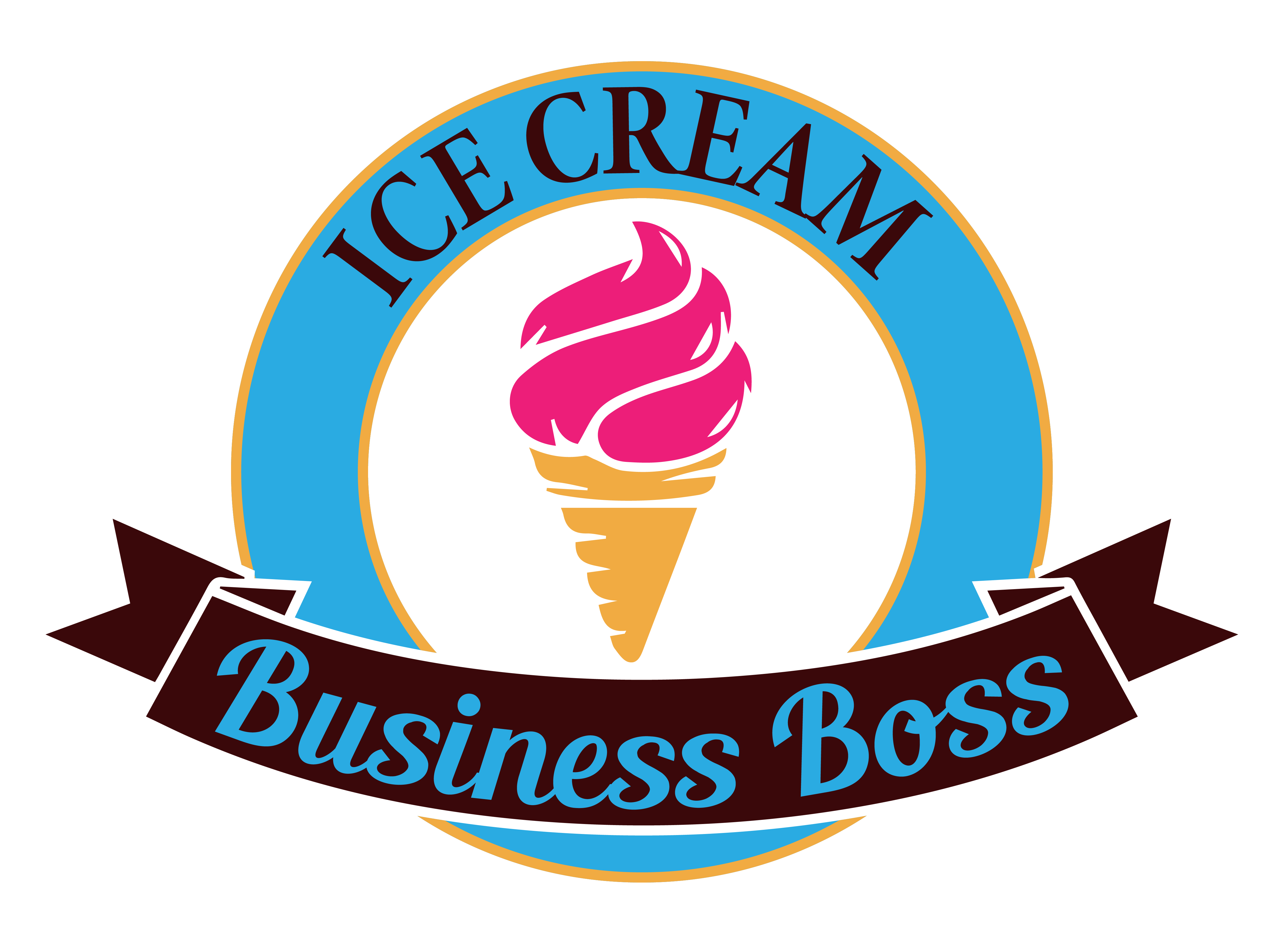Ice cream, a sweet and creamy treat enjoyed by people of all ages, has a timeless appeal. It’s no wonder that many prospective entrepreneurs want to work in the ice cream industry. However, like with any business, achievement in this market involves more than simply a love of frozen desserts. Consider writing a complete book to provide yourself with the knowledge and direction required to make your ice cream business flourish.
To start an ice cream business book, you should research the industry and market trends, define your target audience, outline chapters: business planning, equipment, flavors, marketing, operations, interview industry experts, incorporate tips, photos, case studies, and edit, design, and publish in desired formats.
In this article, we’ll delve into the enthralling world of building a complete guidebook that can be a great resource for prospective ice cream entrepreneurs. We’ll go over the key elements and chapters that should decorate the pages of your book, ensuring that it becomes a beacon for anyone looking to make their mark in the world of ice cream.
Researching the Industry and Market Trends
It is crucial to set the stage for an in-depth comprehension of the frozen dessert market. It starts by exploring the historical significance of ice cream, tracing its origins to ancient civilizations, and showcasing its function as a beloved delicacy across millennia. This history highlights ice cream’s ongoing appeal and demonstrates how popular it continues to be.
It also examines the ice cream industry’s rapid evolution. It clarifies important turning points, inventions, and trends that have influenced the environment. This historical tour offers a viewpoint on the development of the industry, from the modest beginnings of hand-cranked ice cream to the introduction of mass manufacturing and the establishment of international ice cream giants.
A full examination of the modern ice cream market is presented. Readers acquire an understanding of the current dynamics of the business by being provided with statistics on market size, growth projections, and important market players. The market’s constantly shifting consumer preferences are illustrated by new trends like the exploding desire for artisanal and plant-based ice creams.
Defining Your Target Audience
It is devoted to assisting readers in identifying their target clientele, which is essential for launching a prosperous business. It begins by highlighting how crucial it is to identify a target market to properly design products and marketing methods.
By outlining the complex nature of this endeavor and advising readers to research the demographic, psychographic, and behavioral characteristics of prospective clients. It emphasizes how age, gender, geography, and income are all included in demographics while values, interests, and lifestyles are included in psychographics, illuminating how these aspects interact. Buying patterns, brand loyalty, and decision-making processes are also behavioral traits.
It offers helpful tools and techniques for conducting market research and surveys to aid in this inquiry. It emphasizes the significance of gathering information to inform business choices. It encourages the development of in-depth client personas, urging readers to take things a step further. These fabricated personalities are detailed depictions of their ideal clients’ requirements, interests, and problems.
Business Planning

Begin by explaining the significance of a solid business plan in the ice cream industry. Provide step-by-step guidance on creating a detailed business plan, covering aspects such as:
- Mission and vision statements
- Market analysis
- Financial projections
- Funding options
- Legal considerations
- Business structure
Encourage readers to set realistic goals and objectives, emphasizing the need for adaptability in the ever-changing world of ice cream entrepreneurship.
Equipment
The important topic of choosing the appropriate equipment is a critical element in guaranteeing the running of an ice cream business. It serves as a thorough equipment road map, directing readers through the challenging procedure.
It begins by describing the various ice cream machine types, storage options, and equipment needed for a well-rounded operation. The advantages and disadvantages of numerous machine alternatives, such as batch freezers, soft-serve machines, and gelato makers, are explained to readers. Also covered are storage considerations, such as freezers and display cabinets. The importance of quality and durability is highlighted as it describes which utensils and tools are necessary for creating the ideal scoop.
It also provides helpful guidance on how to find trustworthy equipment sources, which is crucial. It explores reliable local and worldwide vendors to give readers access to reliable choices. The need for good maintenance to increase equipment longevity and improve performance is highlighted by the numerous maintenance and efficiency advice that are woven throughout.
Check out this article to learn more about starting your ice cream bike business.
Flavors
By embracing the skill of creating distinctive and signature flavors, your company will stand out in the ever-changing world of culinary delights. Today’s consumers don’t want to settle for basic vanilla or chocolate; they want intriguing, mouthwatering experiences that can only be provided by unique flavors.
Finding top-notch ingredients is the first step in this adventure because they are the foundation of any great culinary expedition. If you want to wow your customers, go for the freshest, highest-quality ingredients, whether they are handmade chocolates, unique spices, or exotic fruits.
Where the magic happens is when flavor profiles are created. Combine different elements, try new things, and don’t be scared to think outside the box. The alchemy of flavor development can be better understood by speaking with flavor experts and seasoned ice cream producers. Apply what you can from their experience to your inventions. Building a devoted following of customers requires consistency. Once you’ve identified your winning flavors, keep up the quality and taste with unyielding consistency.
Marketing

Ice cream business launches and marketing campaigns are complex endeavors that need a smart strategy. Everything starts with branding, a process that involves more than just coming up with a catchy name and an iconic logo.
The essence of your distinctive tastes and the pleasure your ice cream delivers should be captured in your branding. Create a visually beautiful and instantly memorable brand, and create packaging that not only protects your product but also conveys a message to your target market.
Making the most of social media is crucial in the digital age. Engage your audience on social media sites like Instagram, where delectable images and videos of your creations may become viral. You may maintain a close connection with your clients through email marketing by informing them about new tastes, special offers, and upcoming events. Do not undervalue the effectiveness of conventional advertising, particularly in local areas where flyers, billboards, and newspaper advertisements can be effective.
Any effective marketing plan is built around customer engagement. Create loyalty programs that acknowledge recurring consumers and motivate them to tell others about your mouthwatering goodies. Accept client input to continuously enhance your services and offerings.
Operations
A thriving ice cream shop needs to pay close attention to every aspect of daily operations. The sourcing of ingredients is an important consideration; keeping your flavors true requires a consistent supply of premium products like fresh dairy, exotic fruits, and fine chocolates.
To maintain consistency and provide excellent customer service, staff training is essential. Your team should be skilled at scooping, making sundaes that look good, and politely responding to customer questions.
Quality assurance cannot be negotiated. To ensure that every scoop meets your standards, do regular taste tests and quality inspections. To retain customer trust and adhere to health standards, cleanliness, and hygiene are essential. Establish stringent sanitation and cleaning procedures.
The secret to reducing waste and maximizing income is effective inventory management. To balance the demand for cold goodies in the summer and perhaps provide warm alternatives in the cooler months, you’ll need to consider seasonality. Strike a balance that fits your market to avoid financial disasters from either overstocking or understocking.
Interviews with prosperous ice cream business proprietors might yield insightful information. They can exchange operational best practices, such as effective scheduling, managing supplier relations, and cost management.
Interviews with Industry Experts
Including interviewees in your investigation of the ice cream industry is like having a gold mine of knowledge at your disposal. These discussions are a priceless source of guidance, suggestions, and anecdotes, freely offered by knowledgeable individuals who have negotiated the ins and outs of the business.
Ice cream makers, who are frequently the lifeblood of this delicious business, may share insights into the artistry of flavor creation, the subtleties of refining textures, and the techniques for developing distinctive recipes that entice consumers to return time and time. They can provide insight into the difficulties involved in increasing production while preserving quality.
Suppliers, the unsung heroes in the background, can give an inside look at how the best ingredients are sourced, inventory is managed, and a reliable supply chain is maintained. You can choose ingredients wisely and develop purchase plans with the aid of their opinions.
Business consultants offer guidance on market analysis, financial planning, and growth strategies, giving the conversation a strategic edge. They can share their experiences with other ice cream businesses, both good and bad, and help you plot a course that avoids problems and takes advantage of opportunities.
Incorporating Tips, Photos, and Case Studies

Writing an interesting and educational book about the ice cream industry demands a comprehensive strategy that goes beyond verbal communication. Consider adding helpful hints, eye-catching images, and illuminating case studies to the content to better engage your readers.
Each chapter should contain a wealth of practical suggestions that readers may use to further their own ice cream-related endeavors. Your book needs to work as a helpful manual that inspires budding ice cream businesses, whether the topic is perfecting the art of flavor creation, streamlining inventory management, or honing customer service.
Equally important are the visual components. Readers’ mouths can moisten at the sight of mouthwatering ice cream concoctions in high-quality pictures, which can also double as visual instructions for budding ice cream makers. To encourage readers to pursue their entrepreneurial endeavors, highlight the manufacturing machinery, provide insights into the tools of the trade, and share images of prosperous ice cream firms.
Case studies are a potent tool for illuminating real-world achievements and difficulties. Emphasizing companies that have overcome challenges and experienced amazing growth can provide priceless lessons. To create an in-depth and interesting learning experience, combine these narratives with appealing photographs.
Editing, Design, and Publishing
A crucial component of your guide is assisting readers with the last steps of finishing their ice cream business book. The critical phases that connect their innovative ideas with a polished, reader-ready result are editing, design, and publishing.
A great book depends on expert editing. To guarantee text is clear, coherent, and error-free, emphasize the value of hiring an experienced editor. The author’s voice is sharpened through editing, which not only makes the content more readable but also increases reader interest and accessibility.
It is important to consider both the cover and inside design of books. Stress the importance of an appealing design that captures the essence of the book and intrigues potential readers because the cover is the reader’s first impression. The interior layout has an impact on reading; suggestions for choosing a typeface, formatting, and chapter order can make the text flow more easily.
Talk about the different types of publication, such as traditional publishing, self-publishing, and digital formats. Give details on the benefits and drawbacks of each path because each has advantages and disadvantages. users instance, self-publishing allows users greater creative autonomy but demands more marketing work.
Discuss the significance of marketing and promotion. Share tactics for expanding your audience, such as using social media and author websites, book signings, and joint promotions with ice cream shops.
Frequently Asked Questions
What is the cost of starting an ice cream business?
Starting an ice cream business can be expensive, depending on factors such as location, size, and equipment. On average, you may anticipate to spend $50,000 to $200,000 or more.
This budget should cover costs such as renting or acquiring a space, purchasing equipment, obtaining permits and licenses, establishing a first inventory, and marketing initiatives. Remember that continuous operational expenditures, such as employee salary, utilities, and ingredient replenishment, will be factored into your budget.
Do I need prior food industry experience to establish an ice cream business?
While prior experience in the culinary sector might be beneficial, it is not always required to launch an ice cream business. What matters most is a love of ice cream, a willingness to learn, and a solid business sense. Conducting rigorous study, taking workshops or courses, and getting guidance from industry experts are all ways to develop relevant expertise. Hiring experienced employees or collaborating with a mentor can also provide helpful guidance as you negotiate the hurdles of running your own ice cream business.
How do I select the best location for my ice cream parlor?
Choosing the correct location is critical to the growth of your ice cream shop. Consider foot traffic, accessibility to schools, parks, and other attractions, as well as the demographics of the neighborhood. Look for a place that corresponds to your target demographic. Check the competition in the area to guarantee that there is a demand for another ice cream business.
Remember that a visible and accessible storefront, plenty of parking, and a welcoming ambiance can all add to the appeal of your chosen site. To make an informed decision, conduct extensive market research and consider consulting with a real estate specialist.
The information provided by IceCreamBusinessBoss.com (“The Site”) is for general informational purposes only. All information on the Site is provided in good faith, however, we make no representation or warranty of any kind, express or implied, regarding the accuracy, adequacy, validity, reliability, availability, or completeness of any information on the Site. Under no circumstance shall we have any liability to you for any loss or damage of any kind incurred as a result of the use of the Site or Reliance on any information provided on the Site. Your use of the Site and your reliance on any information on the Site is solely at your own risk. This blog post is for educational purposes only and does not constitute legal advice. Please consult a legal expert to address your specific needs. Terms and Conditions.

Hi! I am Shawn and I am a happy individual who happens to be an entrepreneur. I have owned several types of businesses in my life from a coffee shop to an import and export business to an online review business plus a few more and now I create online ice cream/gelato business resources for those interested in starting new ventures. It’s demanding work but I love it. I do it for those passionate about their business and their goals. That’s why when I meet a ice cream/gelato business owner, I see myself. I know how hard the struggle is to retain clients, find good employees and keep the business growing all while trying to stay competitive.
That’s why I created Ice Cream Business Boss: I want to help ice cream and gelato business owners like you build a thriving business that brings you endless joy and supports your ideal lifestyle.

